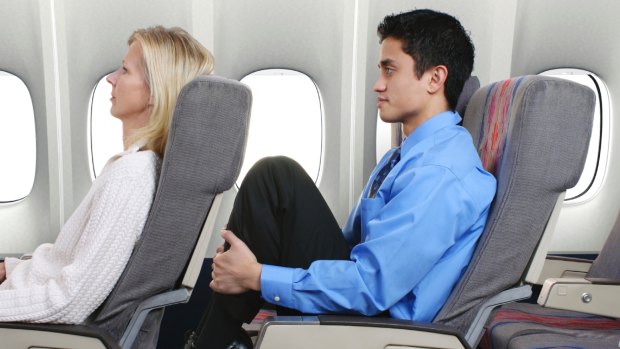By Natalie Paris

Guaranteeing passengers a certain amount of space will only lead to an increase in flight prices.Credit: iStock
Legislation to introduce a minimum seat width and pitch for air passengers is being debated by the US government this week.
Steve Cohen, a congressman from Memphis, claims the average distance between rows of seats has dropped from 35 inches (89cm), before airline deregulation in the 1970s, to about 31 inches (79cm) today, raising health and safety concerns.
But industry commentators warn that guaranteeing passengers a certain amount of space will only lead to an increase in flight prices.
"Any legislation that increases the seat pitch will decrease the number of seats on the plane, thus reducing the average revenue yield per flight," said Phil Bloomfield of Cheapflights.co.uk. "It's almost inevitable that the airlines will seek to offset that by increasing the cost per seat."
He explained that aircraft operating within the European Union must have a minimum pitch seat of 26 inches to meet safety standards. "Yet the average economy-class seat pitch is 31 inches," he added, "because airlines recognise that, while safety is vital, comfort is hugely important too.
"In the US there are currently no regulations on aeroplane seat size but none of the major airlines have pitches smaller than the 26" European minimum," he said.
"Comfort is hugely important for travellers, particularly when flying long-haul, but so is price. If Cohen's SEAT act was to get through and airlines were forced to increase their seat pitches, potentially by as much as 4 inches to the pre-deregulatory size of 35 inches, a hike in fares would inevitably follow."
The call for legroom on planes to become a legal right has been gaining strength in recent years.
A US pressure group, FlyersRights, filed a petition to America's Federal Aviation Administration (FAA) last August, demanding "legislation that could set legal limits on just how small and narrow carriers are allowed to make their seating."
FlyersRights claims to be the largest non-profit airline consumer organisation representing airline passengers, with 60,000 members and supporters. Its petition points out that while specific rules are in place on aviation requirements such as seat belts and headrests, "so far, the only limitation placed on airlines by the FAA regarding seat space is limiting the number of seats in an aircraft based on the number and size of emergency exits."
"Seat pitch" (the space between your seat and the same point on the chair in front) has arguably become a more controversial matter than seat width in recent years, with ever slimmer gaps between rows sparking arguments about available leg-room – and whether it is rude to recline your seat when it eats into the personal space of the passenger behind.
The issue has even caused the rise to prominence of the "Knee Defender" – a device which can be clipped to the rear of the seat in front, preventing the occupant from leaning it back. Many airlines have now banned use of the product after a raft of confrontations which put flights at risk. Last September, a United Airlines service from Newark (in New Jersey) to the Colorado capital Denver had to make an emergency landing in Chicago following a dispute between two passengers over a discreet deployment of the gadgets.
The Telegraph, London
Sign up for the Traveller newsletter
The latest travel news, tips and inspiration delivered to your inbox. Sign up now.